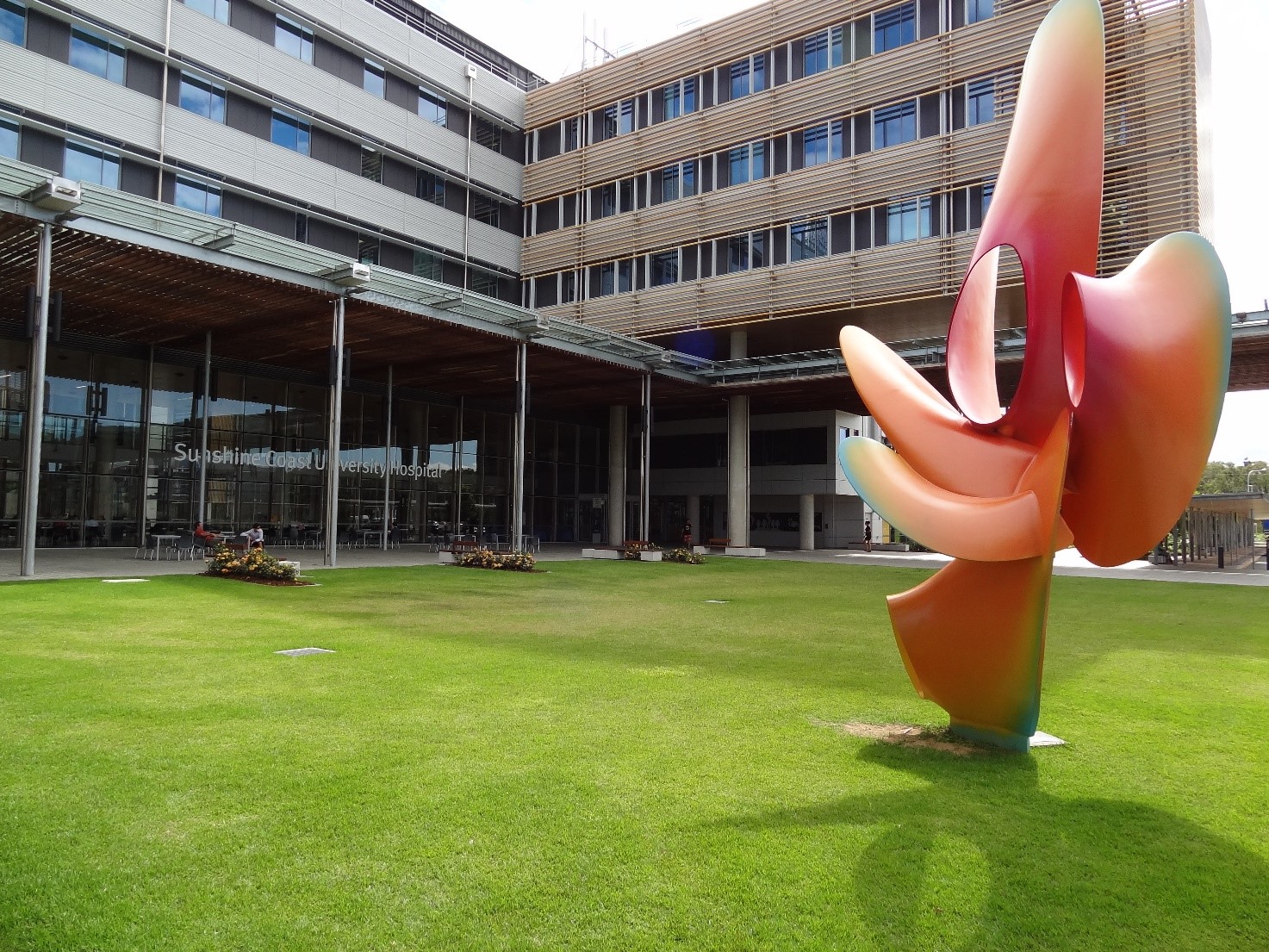
A state-of-the-art hospital
In March 2017, Sunshine Coast Hospital and Health Service (SCHHS) opened the $1.8 billion Sunshine Coast University Hospital (SCUH) - the first new, not replacement hospital - in Australia in 20 years.
This included investments in more than 1,000 new staff members as well as state-of-the-art equipment. All to provide excellent healthcare services to an increasingly growing population.
The size of the hospital is impressive; it has a capacity of more than 700 beds and can be expanded to 900 beds beyond 2021 if needed. Among other things, this includes an emergency department, state-of-the-art bed wards and a Maternity Service department that has seen more than 1,000 new Australians being born in less than a year. All in a facility, covering a surface area of 400,000 m2 – which is the equivalent to approximately 100 football fields.
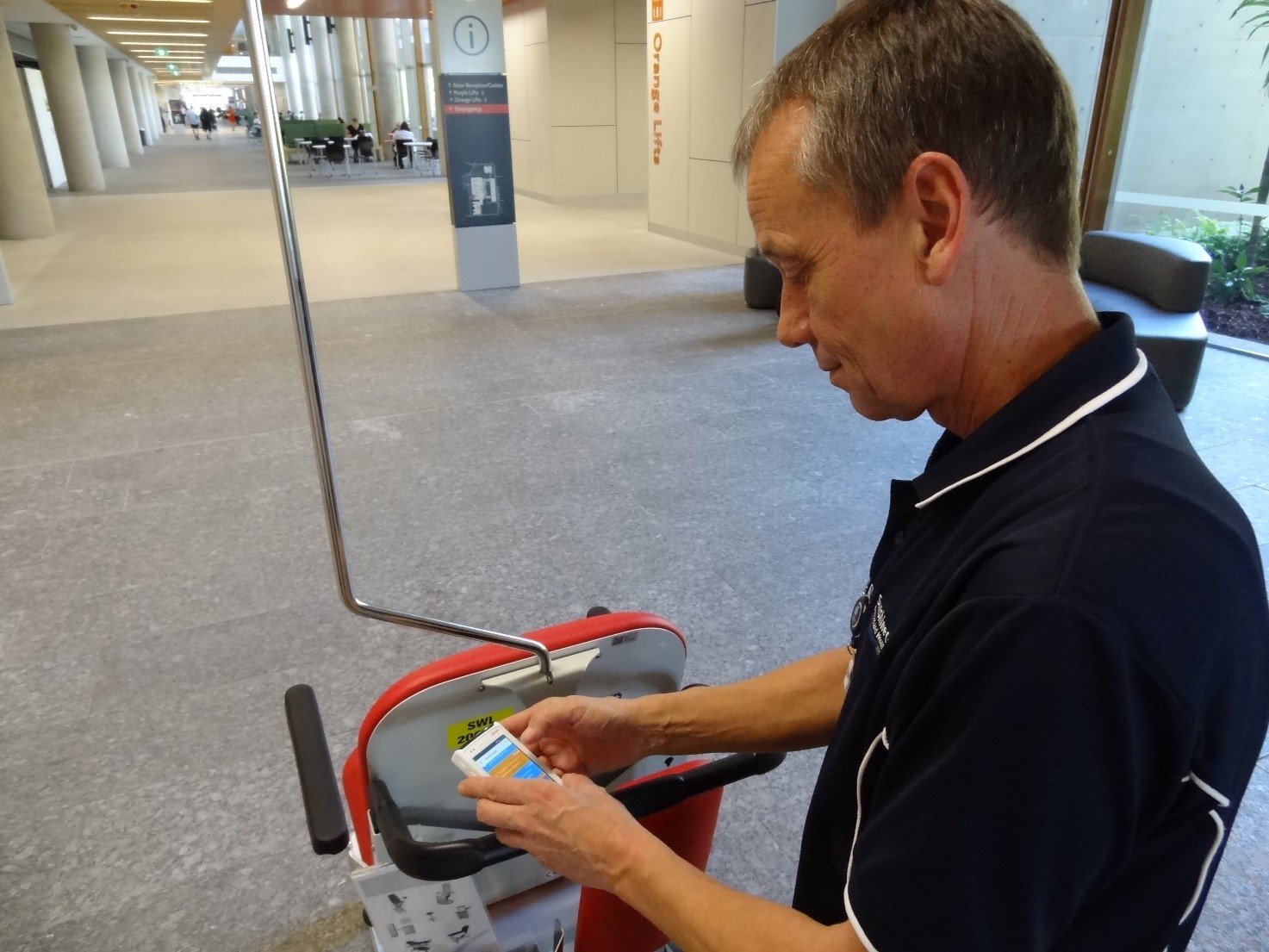
How to ensure great service over great distances
For the Operational Support Services that look after all the non-clinical functions of the hospital, the main challenge was to ensure optimal service efficiency in a facility of this impressive size.
The underground service tunnel alone stretches 490 meters from the Facilities Management Centre to the main hospital building, thus, service staff could easily spend a lot of time overcoming the tyranny of distance.
With this in mind, Operational Support Services searched for an IT system to support a more efficient model of service delivery with multi-skilled Patient Support Assistants capable of working in any ward or department.
The following were the primary system criteria:
After a thorough search and tender process, the Danish IT company Systematic and its Columna Flow Solution was chosen.
“Key objectives were the user friendliness – really from a clinical perspective, as this is important to overcome any initial reluctance to have such a system”.
Catherine Buick, Director for Operational Support Services
Meeting the initial criteria of a high degree of user-friendliness for clinicians was met by a simple and intuitive user interface, which also provides status feedback on tasks by means of colour changes in the different task type icons.
An integration to the Patient Administration System (PAS) ensures that only a minimal amount of typing is necessary, as the Patient Unique ID automatically fills out the name field or vice versa if the clinicians starts out typing the name first. Furthermore, the last known location of the patient is automatically inserted which means that all patient transports and patient assists have a suggested origin - small yet effective measures to help in the busy working life of a nurse.
Integration to service call buttons at the bed wards was also implemented. This ensures that by a single press of a button, clinicians can generate service tasks in Columna Flow – either a PSA assist or a discharge clean. The results of this integration are fast assistance and efficient turnaround times for single occupancy rooms at SCUH.
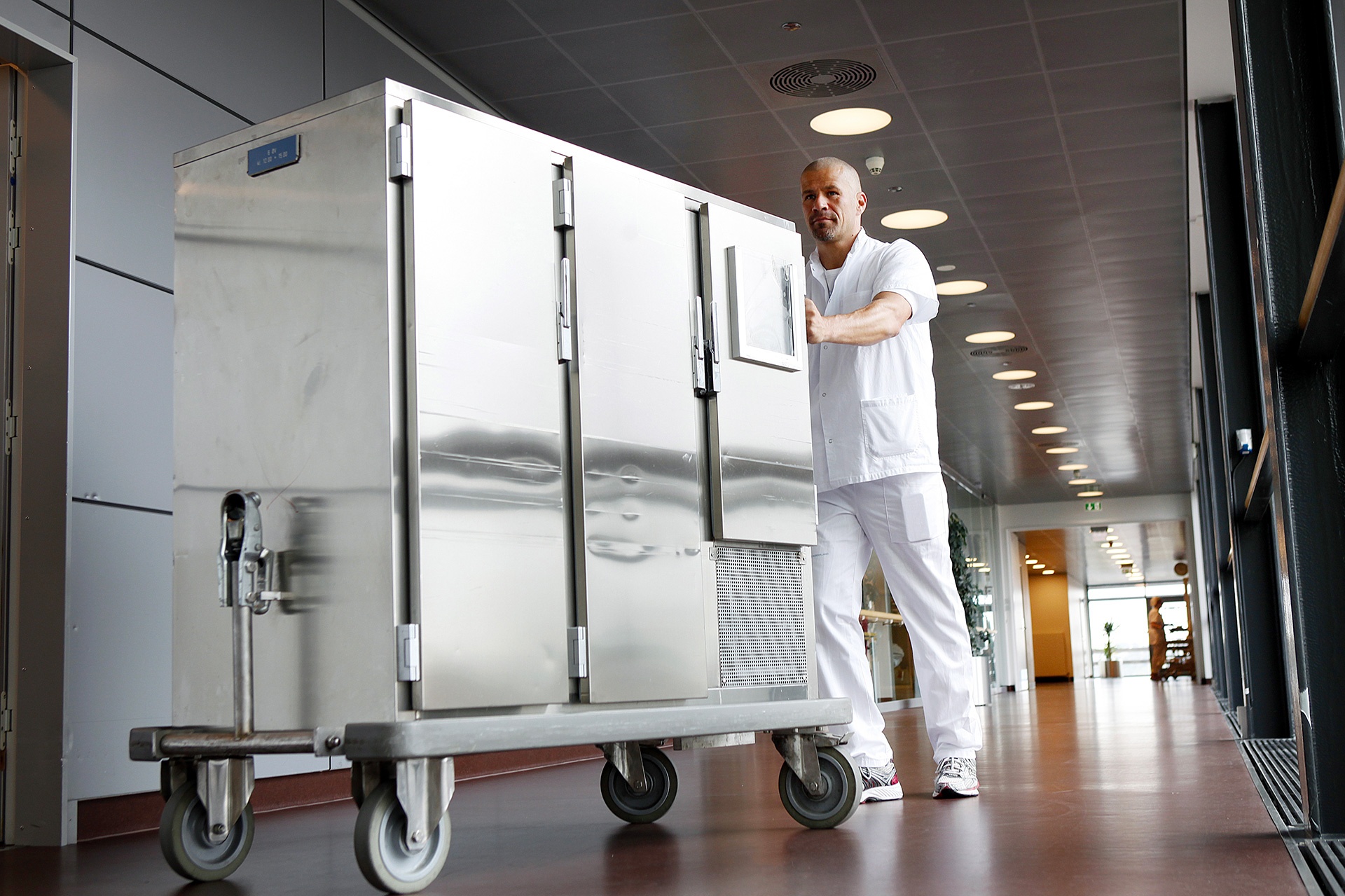
With Columna Flow, the SCUH is achieving its business goals, as currently the system supports the handling of more than 45,000 service tasks a month (October 2017) and keep a fleet of AGV’s busy with more than 550 return trips a day.
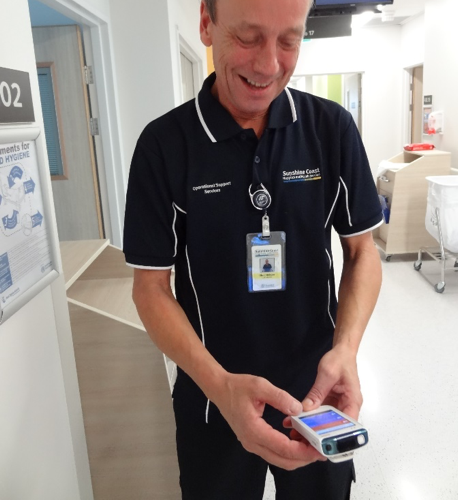
Empower the service staff with an "Uber" system
The second criteria of the system allowing Patient Support Assistants to allocate jobs to themselves instead of always waiting for their supervisor was important, however in Columna Flow, SCUH found, it was not necessarily a situation of having either or, because both options were available as a dual workflow.
In Columna Flow, the PSAs see a list of relevant tasks to choose from on their handsets, either listed in order of priority and time or by distance to the task origin. One could see it as being an efficient ‘Uber’ system for the PSAs.
Ollie, a SCUH PSA, is clearly happy with the system – and as he mentions:
“The visibility of tasks is good – the timeframe – all the information is there …. before we did not have that. It has made our lives easier".
In addition, if assistance is needed for handling two-person tasks one simply swipes right and a list of the nearest colleagues appears.
The majority of tasks are handled by the PSAs at SCUH, but supervisors also have a clear view of all tasks from the Task Overview screen. It is also from this screen that they can manage the workloads of each PSA and assign a task directly. This enables managers to balance the service demand with the resources available across teams and departments.
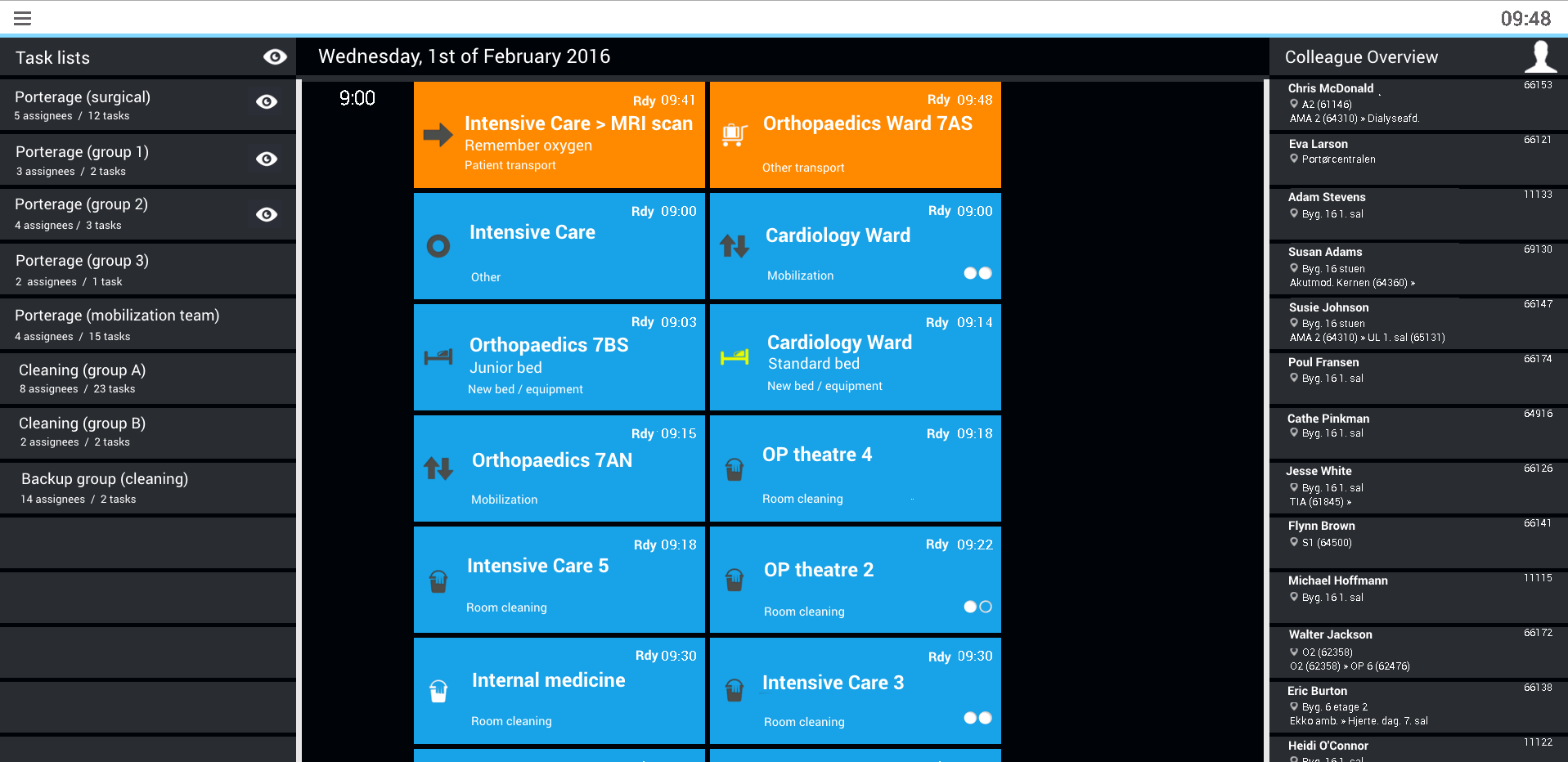
Access to documentation and business insights
The Management Information Download allows SCUH to generate and analyse information about its service operation using the 10 built-in standard reports.
The business insights for SCUH has helped build awareness of what the department actually do on a daily basis – as expressed by Catherine Buick, Director for Operational Support Services:
“It has provided us with a tool to provide information to Management, which is great. …It certainly creates an awareness of what we actually do and the resources it requires. Also, we now have evidence on how we are meeting our KPIs, which is fantastic".

The system has allowed a range of small and efficient teams under Operational and Support Services to execute more than 45,000 tasks a month. This is quite impressive considering the size of SCUH and the distances which PSAs have to travel. The system has also allowed PSA teams to meet internal KPIs and improve response times.
Columna Flow plays a significant role in making all this possible, as it ensures transparency and efficient handling of service tasks.
Catherine Buick, Director for Operational Support Services:
“Without the system, we would not have been able to have our new model of care, necessary for this large facility, working so efficiently”.